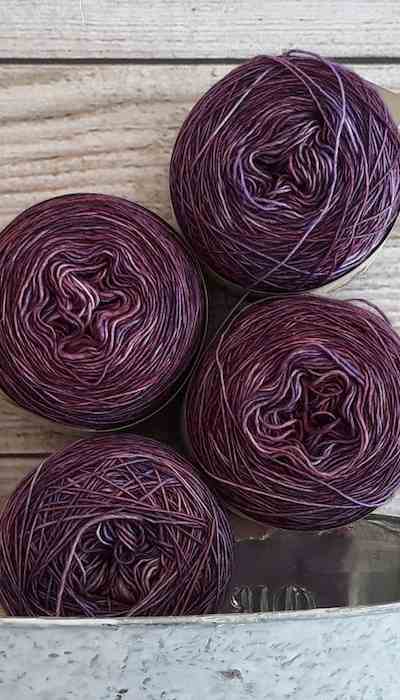The first row of knitting, also known as casting on, is the technique used to join the yarn onto the needle so you can start knitting your first row of stitches.
There are many ways to do this and it’s important to choose the right method since it will be used repeatedly throughout your knitting project. This article covers the basics of how to cast on knitting with both traditional and cable needles.

The Long Tail Cast On
This cast on technique is great for beginners because it’s easy and flexible. You can use it for any number of stitches, as long as you know the width of your knitting needle. To start, make a slip knot in one end of the yarn, then make a loop with the other end around your thumb or fingers.
Then take the yarn that is coming from behind over the top of the loop around your thumb or fingers and pull through the loop. Now you have one new stitch on each side of your thumb or fingers. Repeat this process until you have enough stitches to work with.
For example, if you want 10 stitches total on your needles, repeat them five times before going on to the next step. Once you’re finished casting on all of your stitches, tighten up the loops by pulling gently on the tail so they lay nice and flat against the needle. Make sure not to pull too tight!
The Knitted Cast On

To begin the knitted cast you’ll need a long strand of yarn at least 10-15 inches in length. Place the end of the yarn over your left index finger with the working yarn going behind your hand from left to right (as seen above).
Wrap the working yarn around your fingers and thumb in an x fashion. Next, pull that working then wrap that same end around all four fingers once more before grabbing the working end with your right hand and pulling it through, creating loops on both sides of your hand.
Now insert your needle into the first loop on the front side of your right hand. Bring the needle up and over to catch that loop and pull it back through the stitch. Tighten by holding onto the two strands together between your left thumb and forefinger while still holding onto them with your right hand as well.
You will now have a new loop on top of this old one– this is where you will put your knitting needle next. Continue by bringing up a loop from underneath or from behind, repeating until there are five loops on top of each other in total (if not instructed otherwise).
If there are any leftover ends, tuck them inside for later use when weaving in ends; otherwise cut off any excess lengths for now but save them just in case!
The Cable Cast On
- Place the working yarn in front of the needle so it’s going off of the right-hand side.
- Bring your needle up through one stitch from underneath and then bring the needle back down through the next stitch from overtop.
- Now you have two loops on your left-hand needle, one from under and one from over.
- Put your fingers into these loops and then pull them over each other, creating a new loop on your left-hand needle by pulling on both loops at once. Keep doing this until there is an equal number of loops as stitches to cast on. Then take the needle behind the cast on the row and knit across the row with normal knitting instructions.
The provisional Cast On

The cast-on technique you choose has a big impact on the look and fit of your knitting, so it’s important to choose wisely. The provisional cast on is perfect for beginners because there are no ends to weave in when you’re done.
It also allows for easy resizing in the future, which is great for baby blankets or other items that may need to be larger later on. Here’s how:
- Make a slip knot and place it on your left needle (as if ready to knit),
- Pick up another loop from the ball of yarn and place it on your left needle too (as if ready to knit).
- Draw the yarn through both loops now on your left needle with the right-hand needle pointing towards you.
- Now do this again but pull the new loop up and over the first loop on your left needle as shown below.
- Bring the new stitch down onto your left needle to form a second stitch that sits beside its twin from step four.
- To finish off this cast on, bring the yarn over your thumb and push it down between your needles just like before but instead of drawing it back through like you did last time, just let go of both strands at once.
- You have now created one stitch using two strands of yarn!
Conclusion
Knitting is an incredible hobby, and one of the best things about knitting is that it’s something you can do by yourself. For this reason, casting on is an important technique to learn. Casting on allows you to start a project without having any stitches already made, which means you can get started right away!
If you’re trying for the first time, there are many different ways to cast on. In this tutorial, we’ll go over what I think is the simplest way-the long-tail cast on.
Also, check out the latest articles “Paint on canvas” and “Sunset painting“
Hi I’m Bilal Malik, a digital marketing and blogging expert holding years of experience.










